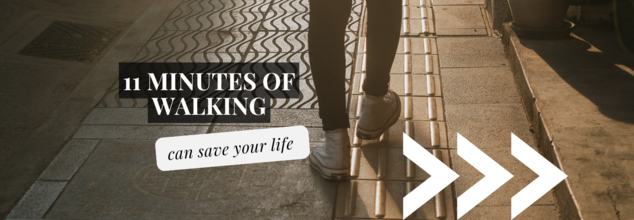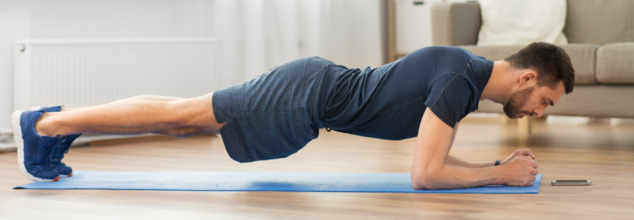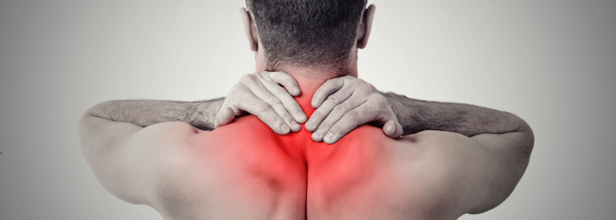
11 Minutes Of Brisk Walk Is The Secret To A Longer, Healthier Life? Study Suggests Benefits
Growing up, I often heard about the importance of staying active, but it wasn’t until I made walking a daily habit that I truly understood its impact. Just a few minutes of walking daily has not only helped me feel more energized but also reduced my anxiety about long-term health issues like heart disease.
A study led by researchers at British Journal of Sports Medicine has revealed that just 11 minutes of moderate-intensity physical activity – such as a brisk walk each day can significantly reduce the risk of early death. Published in a series of health journals and websites, the research highlights that even a short daily walk can lower the chances of developing heart disease, stroke, and certain cancers by up to 10%.
The study emphasizes that this minimal amount of physical activity, which amounts to less than two hours per week, can make a profound difference in overall health and longevity, providing an accessible way for people to improve their well-being.
How is Physical Activity Connected to a Long Life?
The findings challenge the common perception that more extensive exercise regimens are necessary to reap substantial health benefits. Instead, the study suggests that even modest levels of activity, like an 11-minute daily walk, can yield significant health improvements. This discovery is particularly relevant in today's fast-paced world, where many people struggle to find time for regular exercise. By incorporating a brief, brisk walk into their daily routine, individuals can effectively reduce their risk of premature death and chronic diseases, according to the research.Health Benefits of Walking Daily
The study's findings are rooted in the broader body of research that connects physical activity with reduced mortality and improved health outcomes. Walking, in particular, is often recommended as a simple, low-impact form of exercise that can be easily integrated into daily life. The researchers from Cambridge conducted a comprehensive review of studies involving over 30 million participants, which revealed that even small increases in physical activity can lead to significant health benefits.The key to these benefits lies in the impact of brisk walking on cardiovascular health. Regular physical activity helps to improve circulation, reduce blood pressure, and strengthen the heart, all of which contribute to a lower risk of heart disease and stroke. The study also highlights that physical activity can help regulate blood sugar levels, reducing the risk of developing type 2 diabetes. Furthermore, walking has been shown to boost mental health by reducing symptoms of anxiety and depression, as well as improving cognitive function.
One of the most striking aspects of the study is its emphasis on accessibility. The researchers point out that 11 minutes of walking per day is achievable for most people, regardless of age or fitness level. This small time investment can offer substantial returns in terms of health and longevity, making it an appealing option for those who may be intimidated by more rigorous exercise routines.
What are the Long-term Benefits Of Walking?
Beyond the physical health benefits, walking also has a positive impact on mental and emotional well-being. The study indicates that regular walking can help alleviate stress, improve mood, and increase overall energy levels. This is particularly important in today’s context, where mental health concerns are on the rise. Walking outdoors, in particular, has been associated with enhanced mental clarity and reduced feelings of depression.The act of moving in a natural environment can provide a sense of calm and perspective, further contributing to an individual's overall quality of life.
Moreover, walking can serve as a form of social engagement. Whether walking with a friend, family member, or pet, this activity can strengthen social bonds and foster a sense of community. These social interactions are essential for emotional health, providing a support system that can buffer against stress and anxiety.
The study also emphasizes the cumulative effect of daily walking. Even though 11 minutes may seem insignificant, the consistency of this practice can lead to long-term health improvements. Over time, these daily walks can help maintain a healthy weight, reduce the risk of chronic diseases, and increase life expectancy.
5 Tips for Adding Walking into Your Daily Routine
1. Start SmallBegin with just 5 minutes of walking and gradually increase to 11 minutes or more. This makes it easier to build a consistent habit.
2. Walk During Breaks
Use short breaks at work or school to get in a quick walk. Even walking around the office or home can add up throughout the day.
3. Make It Social
Walk with friends, family, or pets to make the experience enjoyable and motivate each other to stay consistent.
4. Walk to Destinations
Whenever possible, choose walking over driving for short trips, such as going to the store or running errands.
5. Set Reminders
Use your phone or a fitness tracker to remind you to take a walk. Setting a specific time each day can help you stick to the habit.

(Credit-Canva)
Common Mistakes That Are Making Your Planks Ineffective
If there is any exercise that makes you realize the actual length of a minute, it is a plank. It may seem like a simple and easy workout, but it needs a lot of endurance and core strength. If done right, it affects the core muscles as well as sculpts your entire body. One thing you must remember while doing a plank is that it's not just about how long you did it for, it's also about your form.
If you have the correct posture and clock a lesser time than other seasoned plank doers, you are on the right path. There are many other small mistakes that you may be making, which could make your plank ineffective.
Common Plank Mistakes to Avoid
The key to a good plank is maintaining proper form, not just holding it for a long time. Balance on your palms and toes, keeping your body in a straight line from head to heels. Wrists should be under shoulders, elbows and knees locked, hips square, and neck neutral. Forearm planks follow the same principles. However, many things can go wrong. Here’s how.
Dropping Hips
Letting your hips sag during a plank puts unnecessary pressure on your lower back. This reduces the effectiveness of the exercise for your core and glutes. To maximize benefits and avoid injury, keep your hips in a straight line with your head and heels.
Piking Hips
Raising your butt into the air makes the plank significantly easier, but it also diminishes its effectiveness. To truly engage your core and glutes, lower your hips until your body forms a straight line. This ensures you're working the correct muscles and building strength.
Tilting Hips
It's common for one side of your body to be stronger than the other, which can cause your hips to tilt. To prevent uneven muscle development and avoid back strain, consciously keep your hips level and equidistant from the ground throughout the plank.
Dropping Head and Neck
Allowing your head and neck to droop forward disrupts the proper alignment of your spine. This can lead to neck pain and reduce core engagement. To maintain correct form, keep your gaze forward and your neck relaxed, ensuring it's in a neutral position.
Craning Head Up
Lifting your head and neck upward creates excessive tension in your neck and upper spine, making it impossible to maintain proper plank form. To avoid this strain, keep your neck in a neutral alignment, looking slightly forward or down, and avoid lifting your head.
Rounding Shoulders
Allowing your shoulders to round forward puts undue stress on your neck and shoulders. To alleviate this, actively pull your shoulder blades down your back and open up your chest. This will improve your posture and reduce strain during the plank.
Forgetting to Engage Abs
A plank is far more effective when you actively engage your abdominal muscles. Tighten your stomach muscles throughout the exercise to support your spine and maximize the core-strengthening benefits. This turns a simple hold into a powerful core workout.
Ignoring Glutes
Many people overlook the role of the glutes in a plank. Squeezing your glute muscles not only helps lift your hips but also allows you to hold the plank position for a longer duration. This maximizes the exercise’s overall benefits.
Incorrect Hand Placement
Placing your wrists and elbows too far apart or in a staggered position can lead to wrist pain. To prevent this, ensure your wrists and elbows are stacked directly underneath your shoulders. Also, align your fingers evenly to distribute weight and work both sides of your body equally.

Credit: Canva
Does Penis Continue To Grow After Puberty?
Testosterone is a male sex hormone that plays a crucial role in metabolism, influencing various aspects of health, including libido and sperm production. While testosterone is essential during puberty for penis growth and testicle development, its effects on size plateau once a man reaches sexual maturity.
During puberty, testosterone surges dramatically, driving the growth of male sexual organs. It is during this time that the characteristics like libido, penis and testicles develop. This "blast" of testosterone, typically ends by the mid to late teenage years. Dr Paul Turek, a reproductive urologist, speaking to Men's Health, said, "Fertility is achieved as the testicles and penis increase to adult size during this phase."
Penis Doesn't Continue To Grow After Puberty
Once testosterone levels stabilize after puberty, the sexual development of the penis is complete. The final size of the penis is primarily determined by genetics. That implies you are already born with a penis size. Even if testosterone levels rise later in life, they won't influence penis size. Studies, such as one from the University of Utah School of Medicine, confirm that stretched penile length in adult men is not linked to testosterone levels. Additionally, the Kinsey Institute highlights that the penis is made of spongy tissue, not muscle, which means it cannot be "built up" through exercises or external methods.
Beware Of Testosterone Supplements
While testosterone is essential for sexual health, artificially increasing testosterone levels through supplements can be harmful. Many products promising to enhance penis size are ineffective and potentially dangerous. According to data from Harvard Medical School, more than the required levels of testosteronecan trigger health issues like low sperm count, heart damage, high blood pressure, mood swings, and more.
Penis Size Has Increased Globally
Interestingly, a Stanford University study found that the average erect penis length has increased by 24% worldwide over the past three decades. However, researchers noted this change isn't due to rising testosterone levels—in fact, testosterone levels have declined in many populations. Instead, environmental factors like pollution may play a role, though more research is needed to understand this phenomenon.
It’s natural to be curious about size, but experts emphasize that function is far more important. Health experts advise men to seek medical attention if they notice changes in appearance, such as spots, bumps, or curvatures, or if there are functional concerns. Addressing issues early not only ensures appropriate treatment but also alleviates unnecessary stress about potential problems.
So besides the shape, many different things can affect penis health. The list includes:
your ability to urinate comfortably
your ability to get or maintain an erection
your fertility
In addition, having a good penis health also means not getting infected from sexually transmitted diseases and also being free from penile cancer. One of the main factors that influence penis is hygiene, besides, age, sexual practices amongst others. Therefore, practicing good hygiene is essential for your health. You must wash your penis and groin area frequency to keep it clean and free of diseases.

Credits: Canva
What Causes Muscle Fatigue?
Muscle fatigue is a condition that reduces the ability of muscle to perform over time. While it is more commonly associated with exercise, it can also result from certain medications or underlying health conditions. These conditions could vary from anemia, dehydration to mental conditions like depression. Another condition that may cause muscle fatigue is hepatitis C.
When you start physical activity or any daily tasks, your muscles feel strong and resilient. However, only after repeated movements that you can cause your muscle to weaken and tire. This progressive loss of strength and endurance is one of the most defining characteristics of muscle fatigue.
What Can Cause Muscle Fatigue?
Although physical exertion is a common trigger, muscle fatigue can stem from various medical conditions, including:
Endocrine and Metabolic Disorders: Addison’s disease, hypothyroidism, anemia
Infections and Immune Conditions: Influenza, tuberculosis, HIV, hepatitis C
Neurological and Muscular Disorders: Muscular dystrophy, myasthenia gravis, cerebral palsy, myositis
Psychological Factors: Anxiety, depression, chronic fatigue syndrome (CFS)
Lifestyle Factors: Dehydration, sleep deprivation, poor muscle tone, lack of exercise
Other Triggers: Medications, chemotherapy, pregnancy, lactic acid buildup
What Are The Symptoms Of Muscle Fatigue?
Muscle fatigue can happen in any part of the body and there are early signs of weaknesses. However, other signs too can give you a heads up that you are tiring your muscles a little too much. These include:
- Soreness and localized pain
- Shortness of breath
- Muscle twitching and trembling
- Weak grip strength
- Muscle cramps
If muscle fatigue interferes with daily activities or worsens over time, medical attention may be necessary, as it could indicate a more serious condition.
How Can Your Manage And Treat Your Muscle Fatigue?
Treatment depends on the root cause of muscle fatigue. If it is unrelated to exercise, consulting a doctor is crucial for diagnosis and appropriate care.
Self-Care and Lifestyle Changes:
Rest and Recovery: Allow adequate time for muscles to recuperate.
Hydration and Nutrition: A balanced diet and proper fluid intake support muscle function.
Stretching and Warm-Ups: Pre- and post-exercise stretching can prevent muscle strain.
Hot and Cold Therapy: Alternating heat and cold can help reduce inflammation and discomfort.
Medical Interventions:
Medication: Anti-inflammatory drugs or antidepressants may be prescribed for specific conditions.
Physical Therapy: Targeted exercises can improve mobility and accelerate recovery.
Further Evaluation: Persistent or worsening fatigue may require additional medical tests to rule out underlying disorders.
Muscle fatigue is often temporary and it can resolve with proper rest and care. However, if the tension in your muscle continues and you see the signs persist or worsening despite the treatment, it could be a sign of something more serious, maybe an underlying health condition. The best thing to do would be to seek medical advise.
Which Muscles Can Get Tired Easily?
Some muscles in the human body fatigue more quickly than others due to their function and composition. Muscles are classified into two main types: slow-twitch (Type I) and fast-twitch (Type II) fibers. Fast-twitch muscles, responsible for quick, powerful movements, tend to tire faster than slow-twitch muscles, which are built for endurance.
Calf Muscles (Gastrocnemius & Soleus) – These muscles support standing, walking, and running. The gastrocnemius, which has more fast-twitch fibers, tires quickly, especially during sprinting or jumping.Quadriceps – Found in the front of the thighs, they power movements like squatting, running, and cycling. High-intensity activities cause them to fatigue rapidly.
Biceps and Triceps – These arm muscles are involved in lifting and pushing. Repetitive lifting can lead to quick fatigue, particularly in the biceps.
Forearm Muscles – Used in gripping and fine motor tasks, these muscles fatigue quickly during prolonged activities like writing or holding heavy objects.
Abdominal Muscles – Core muscles, including the rectus abdominis, fatigue during sustained core exercises like planks or crunches.
Shoulder Muscles (Deltoids) – These muscles tire quickly in activities involving overhead lifting or sustained arm movements.
© 2024 Bennett, Coleman & Company Limited

